Once a year, Cairo hosts the Moulid al-Hussein, which is a major Sufi religious festival. It’s a mixture of sacred religious observation and joyous celebration. Many Egyptians from throughout the country come to Cairo for it. A moulid observes a holy person’s birth date, and this particular one honors the grandson of the Prophet Mohamed, whose name was Hussein.
On two different occasions, my visits to Cairo coincided with Moulid al-Hussein. When I was there in February of 2016, I took the photos appearing in this blog post.
During the moulid, the streets in the Islamic part of Cairo are intensely crowded, so crowded that people’s bodies press against each other as they try to pass. Normally, that crowd level would make me uncomfortable, but in this setting, the general mood was so joyous that I was able to relax and appreciate the experience. Looking back on them, I wish I had taken some photos to show how crowded the Khan al-Khalili was with celebrants. It was amazing!
During the moulid, the streets surrounding this part of Cairo are also filled with taxis, buses, and regular autos, so it was necessary to allow extra time for traveling between downtown Cairo and our hotel which was farther out.
The Moulid By Night
This grid of lights hanging above El Mouezz Street (a major artery of Islamic Cairo) had not yet been turned on at the time I took this photo.
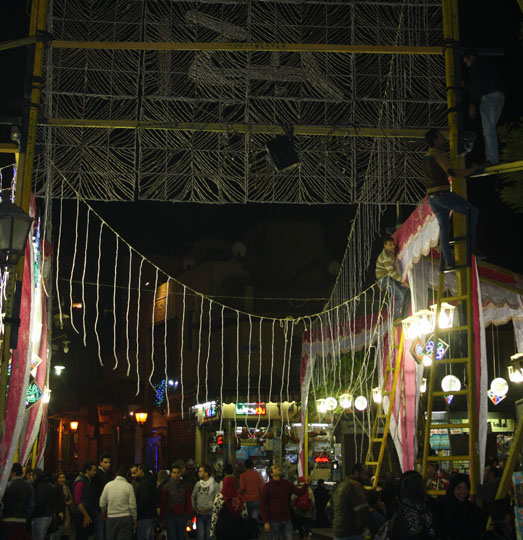
Later, I was able to come back and take photos of the lighted grid after it was turned on, as shown below. Each segment of the grid featured colored geometric shapes, and these took turns blinking on and off.
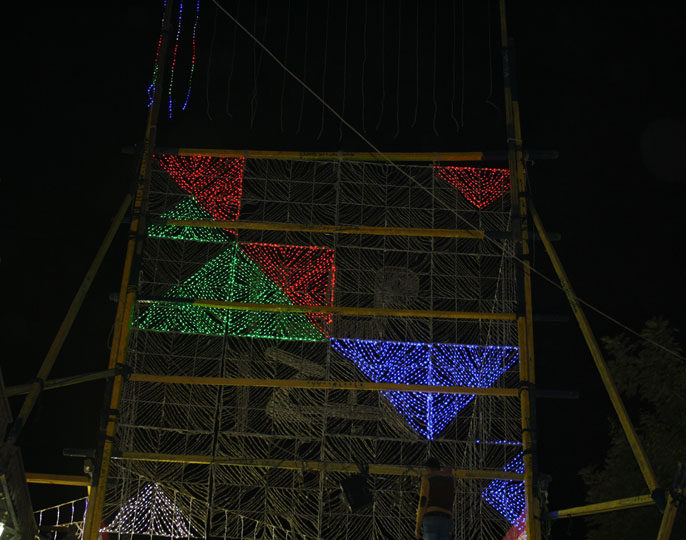
The photo below shows how the ceiling of another street in the Khan al-Khalili area was lit up for the occasion. I loved the festive environment that was created by all the decorations that were put up for the moulid!
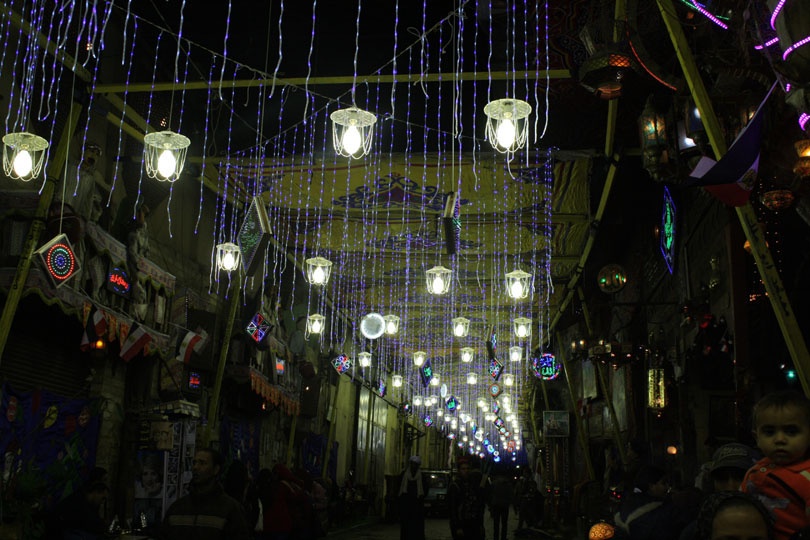
Fun for the Family
The moulid features several carnival rides set up to entertain the children. The photo below shows one of them that I found particularly appealing because of the bird design.
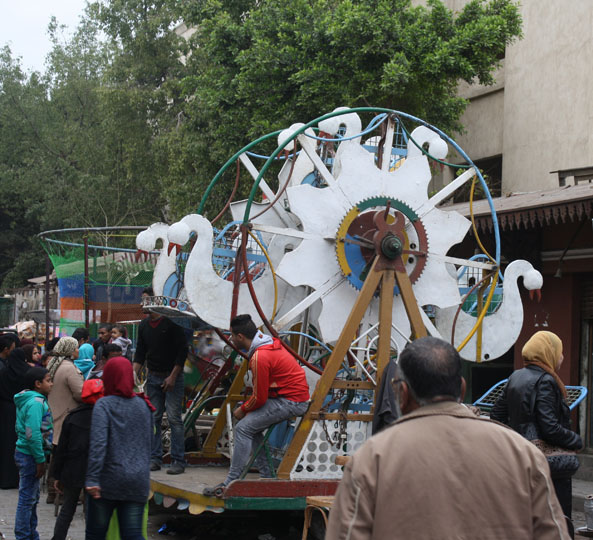
There were also many vendors selling toys for children, sparkly party hats such as the ones shown in the photo below, food, and other items. In retrospect, I wish I would have purchased a couple of the party hats to take home with me!
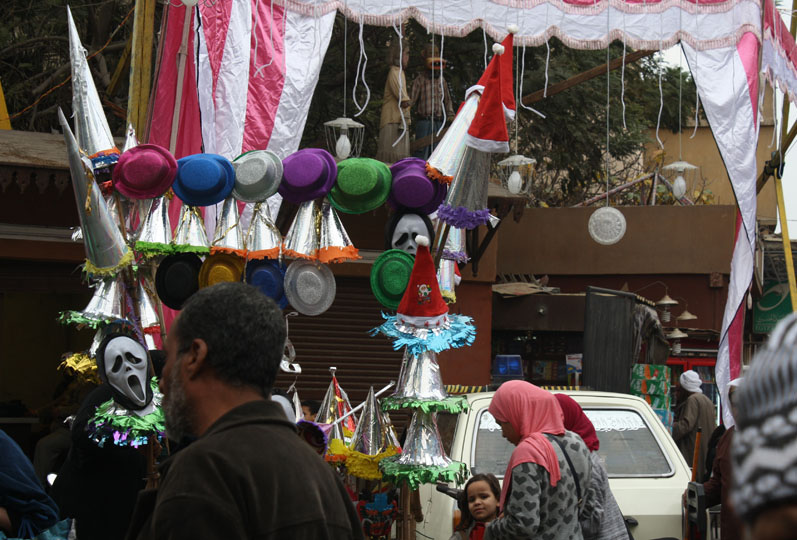
Off to the sides of the street, photographers had set up kiosks equipped with clothing of bygone times. Moulid-goers would pose for souvenir photos wearing these melayas, tarbooshes, and other historic garb. It reminded me of similar photography vendors I have seen at tourist sites in the American West who offered visitors the opportunity to dress up as cowboys or saloon girls for souvenir photos.
The Zikr
During the moulid, the men gathered at the Hussein mosque for a Sufi ritual known as a zikr. This mosque is an important landmark in Cairo because some Shia Muslims believe that Hussein’s head is buried on the grounds. In the zikr, the men move rhythmically together in unison while musicians perform Sufi songs whose lyrics praise God. The movements are repetitive, designed to enable the men to go into trance. These zikrs can continue for many hours, often all night.
More About Moulids
Moulids in Egypt are festivals that celebrate the birth dates of saints, both Christian and Muslim. Technically, moulids are not part of the Muslim faith, they’re a part of traditional Egyptian culture. Many Muslims don’t celebrate them, particularly outside of Egypt. Another moulid I have visited and written about was the one in Luxor honoring Abu el-Haggag.
In addition to the activities I described above, the people attending a moulid will often make a pilgrimage to visit a shrine honoring the the saint.
The dates for moulids are set according to the Islamic calendar. The moulid al-Hussein occurs in the month of Rabi Al-Tani according to the Islamic calendar. Because the Islamic calendar is based on the cycles of the moon, the dates for this and other moulids on the 365-day solar calendar change each year. If you’re hoping to be in Egypt for a moulid, it’s necessary to research which dates it is expected to occur in the year you want to go.
Related Articles
Other articles on this blog related to Egypt’s Islamic traditions include: